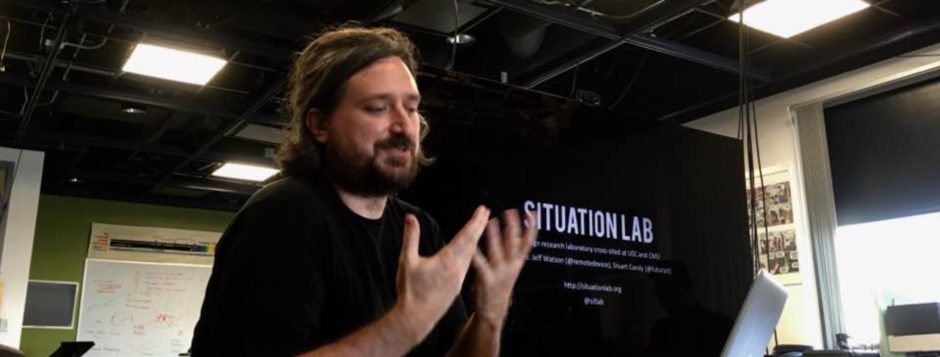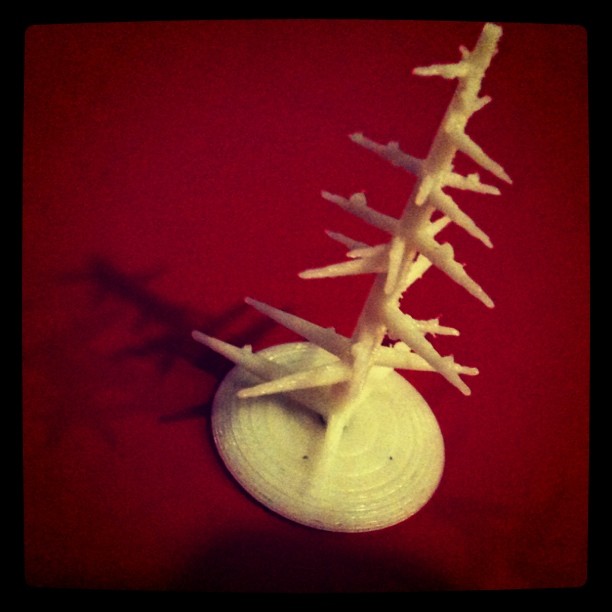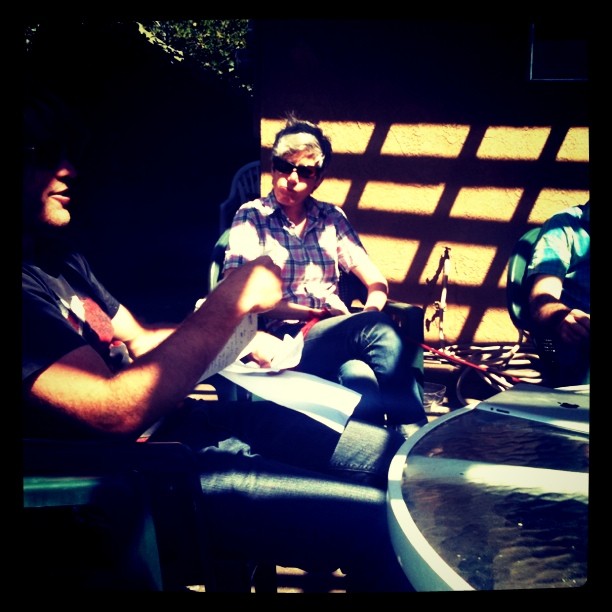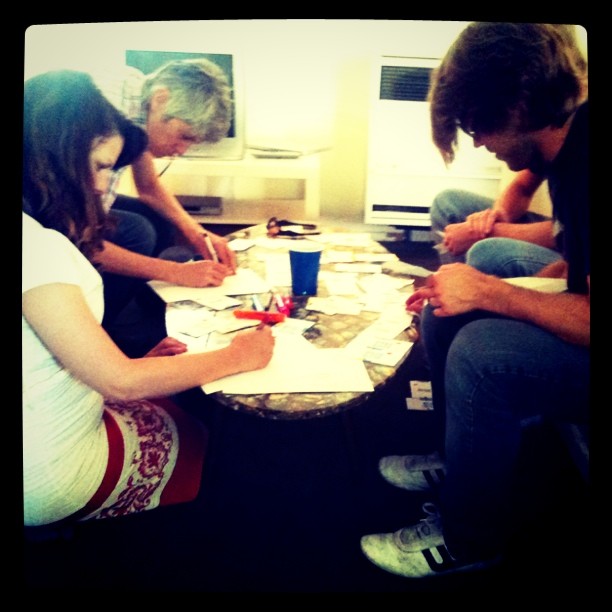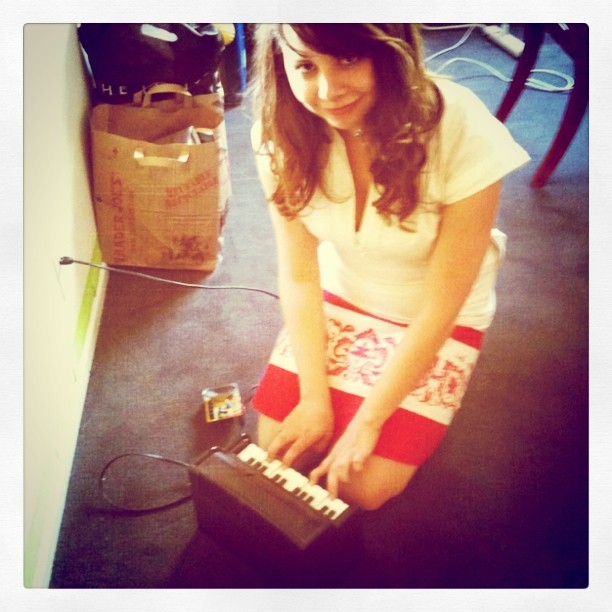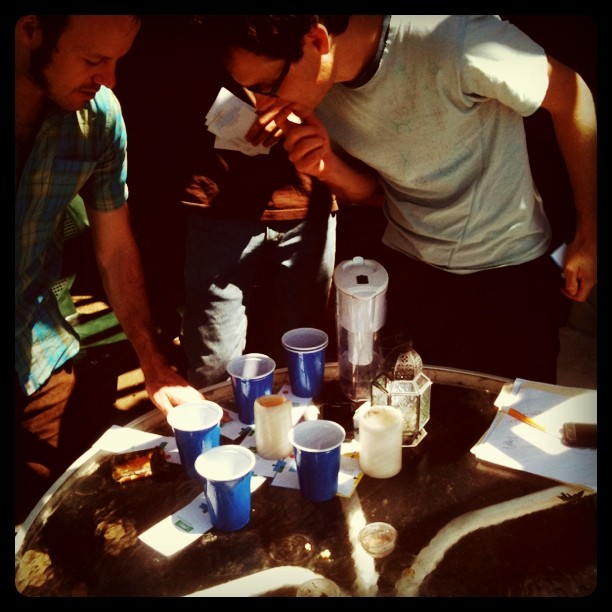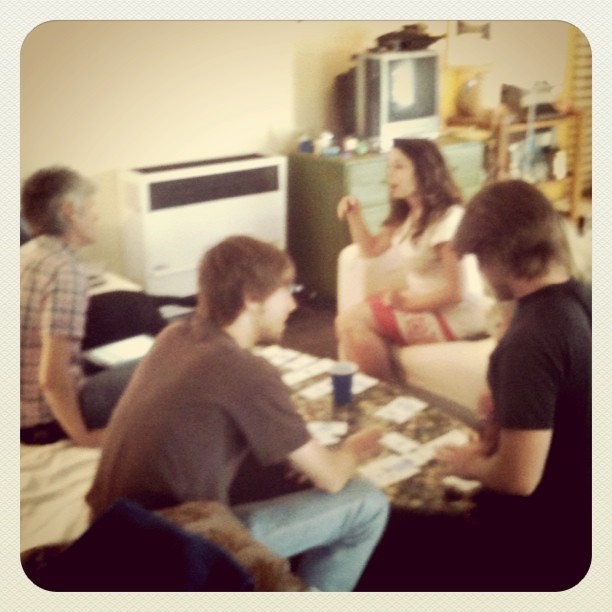[intro] Situationist is an iPhone app that injects surprise and serendipity into everyday life. The app uses geolocation and push notifications to alert members to each other’s proximity, then challenges them to interact in random “situations”. As the artists state on the app’s website, “Situationist is not for the timorous . . . in fact it is a protest against the demonisation of strangers encouraged by the media. Fear not!” Benrik, the creative partnership of Ben Carey and Henrik Delehag who created the app, spoke with me about their project via email:[/intro]
Situationist is an iPhone app that injects surprise and serendipity into everyday life. The app uses geolocation and push notifications to alert members to each other’s proximity, then challenges them to interact in random “situations”. As the artists state on the app’s website, “Situationist is not for the timorous . . . in fact it is a protest against the demonisation of strangers encouraged by the media. Fear not!” Benrik, the creative partnership of Ben Carey and Henrik Delehag who created the app, spoke with me about their project via email:[/intro]
Situationist App really messes with my day sometimes. It makes me uncomfortable and interrupts important meetings. It fragments moments that would otherwise have been continuous. Is it all about breaking things, or does it put something together, too?
We’re quite comfortable with creating uncomfortable moments. Part of the idea behind what we do is to create counter-routines, to highlight and question the structure of your everyday life by imposing an alternative that clashes with it – our “Diary Will Change Your Life” book series is based on the same principle. It’s serendipity with an edge. Of course you could always just ignore the app’s notifications…
One thing I really appreciate about this App is that it’s somehow about an urbanism that’s not rooted in any particular city — or even in any particular kind of city. It works great here in LA, at least when it comes to gathering-places like bars and restaurants and workplaces. I imagine it works quite differently in London, what with people actually walking around everywhere. Is there anywhere it wouldn’t work? Or, put differently, what would a city look like that didn’t need an intervention like this?
That’s an interesting point. It does presuppose a certain kind of city, and in fact it sets out to foster it – a city where people walk around at some leisure and spend time in open communal spaces where they can see and find each other, like cafes. It also requires a certain kind of urban being and community, a city-dweller who trusts his or her fellow citizens enough to interact with them at random. We think subconsciously the model must have been Paris. Unsurprisingly, the app has done very well there, and we get lots of emails clamouring for a French version.
Do you get any kind of analytics on the back-end about where and how people are using the app? Do have a “master map” of unfolding situations to ponder?
The app was created on a shoestring, so we don’t have google-like levels of back-end data, although it would be very useful. We do know the most popular tasks / interactions – the most popular is ” Wave at me like a long-lost friend”. The least popular is “Help me rouse everyone around us into revolutionary fervour and storm the nearest TV station”, which is a shame as it’s our favourite. We also discovered something interesting when examining successful situations – when you pair up the photos of the strangers who’ve interacted, a disproportionate number look very similar. At first we thought our designer must have somehow mismatched the data. But what this must reveal is that people are much more prepared to interact with a complete stranger if they look like them. It probably makes sense in evolutionary terms, but it’s still uncanny to discover this through the app.
Constant wrote, “We are in the process of inventing new techniques; we are examining the possibilities existing cities offer; we are making models and plans for future cities. We are conscious of the need to avail ourselves of all new inventions, and we know that the future constructions we envisage will need to be extremely supple in order to respond to a dynamic conception of life, which means creating our own surroundings in direct relation to incessantly changing ways of behavior.” Is this what you’re up to, then?
Yep. The original situationists pontificated at great length about situations, but didn’t actually come up with many – the derive, detournement, and not much else frankly. We see ourselves as continuing their work – although in very different historical and political circumstances obviously. Debord also foresaw new technologies would lead to new situationist techniques. This app is one of the first to explore geolocation technology as a means of remodelling urban relationships. Most geolocation apps seem to focus on providing coupons for cheaper coffee, which makes us despair ever so slightly.
You’ve got to have a touchstone quote or two. Hit me.
Hmmm. We do have a slogan for Benrik: “Your values are our toilet paper”. Or in French: “Vos valeurs sont notre pecu”.
What’s the next step? Is there a Commune App in the works? Will you be expanding or updating Situationist App in any way?
Not sure what our next app will be yet. The market for proto-Marxist apps is no doubt huge and very lucrative. We’ll update Situationist at some point, but the idea was always to keep it extremely clean and minimal. We’ll probably add tasks suggested by our users.
Thanks again…much appreciated.
More info: http://www.situationistapp.com/
Situationist App developed by: Turned On Digital
